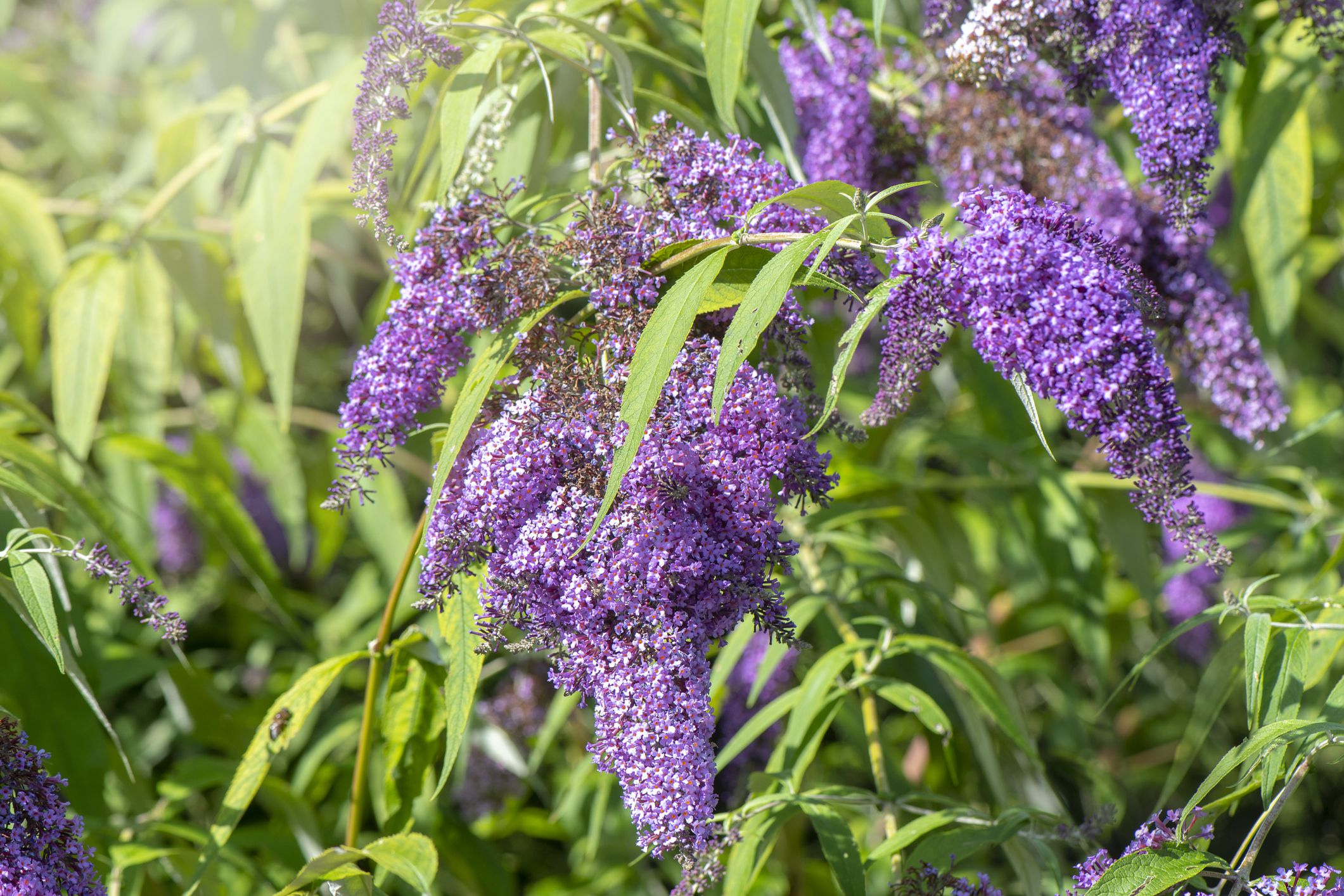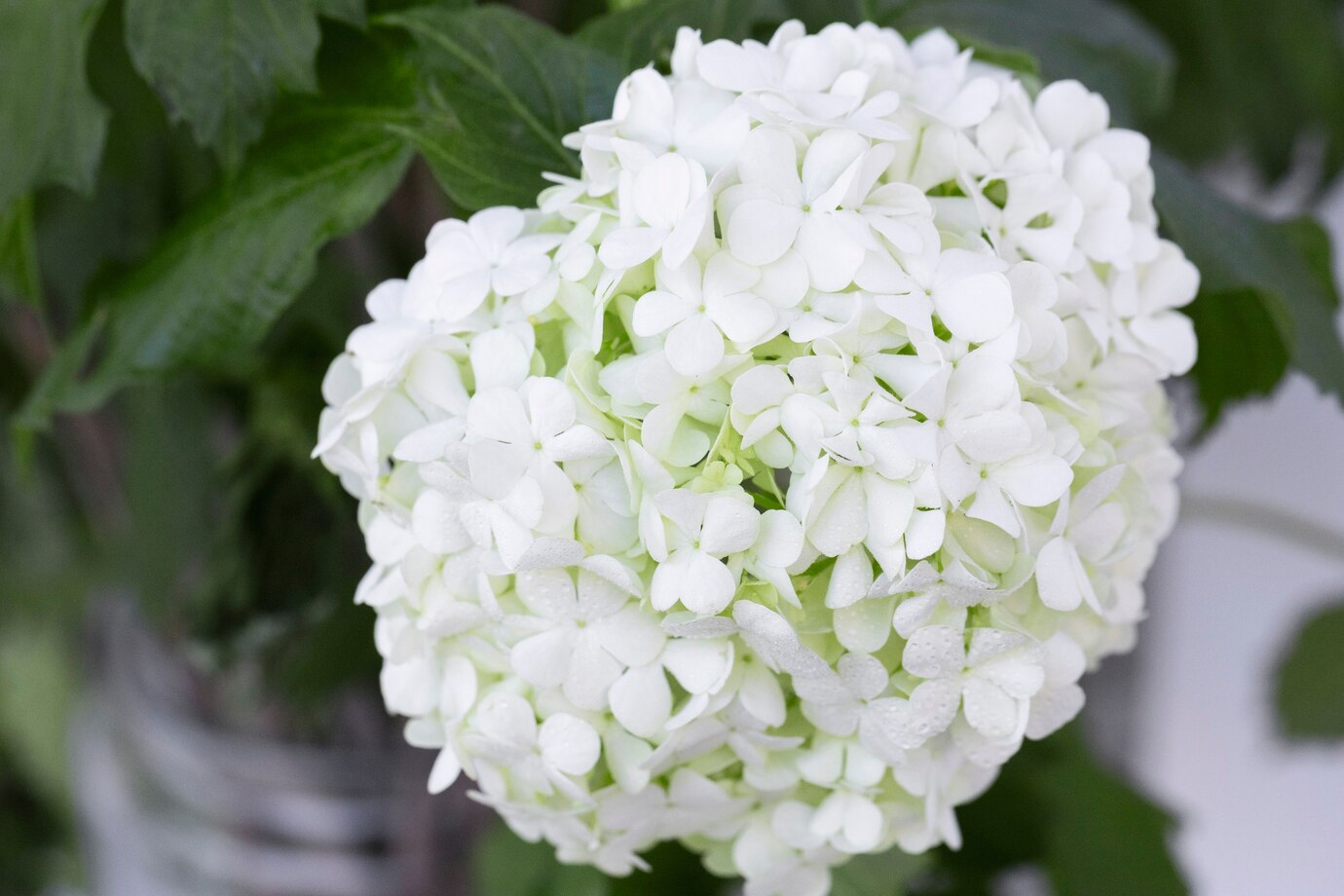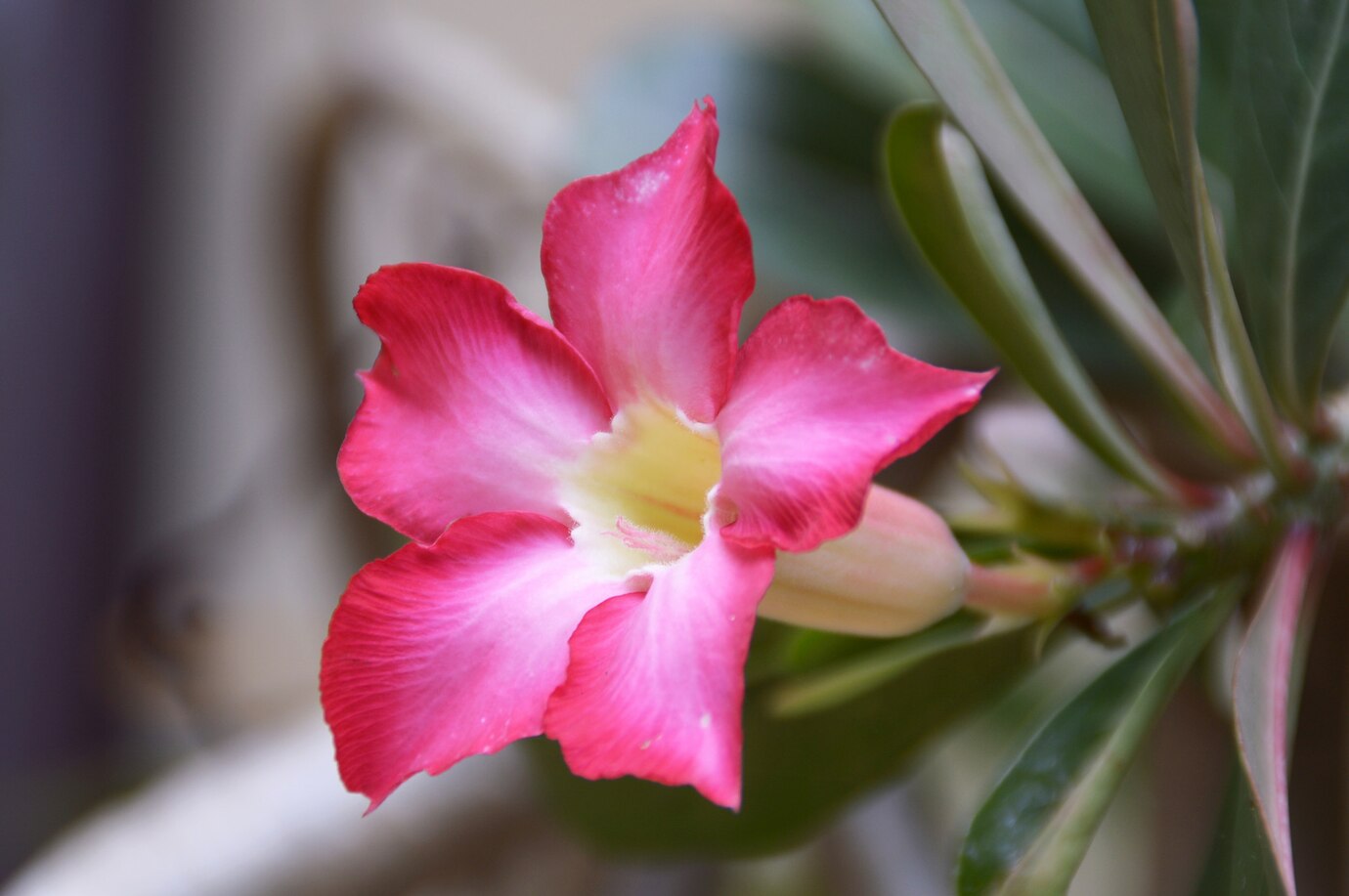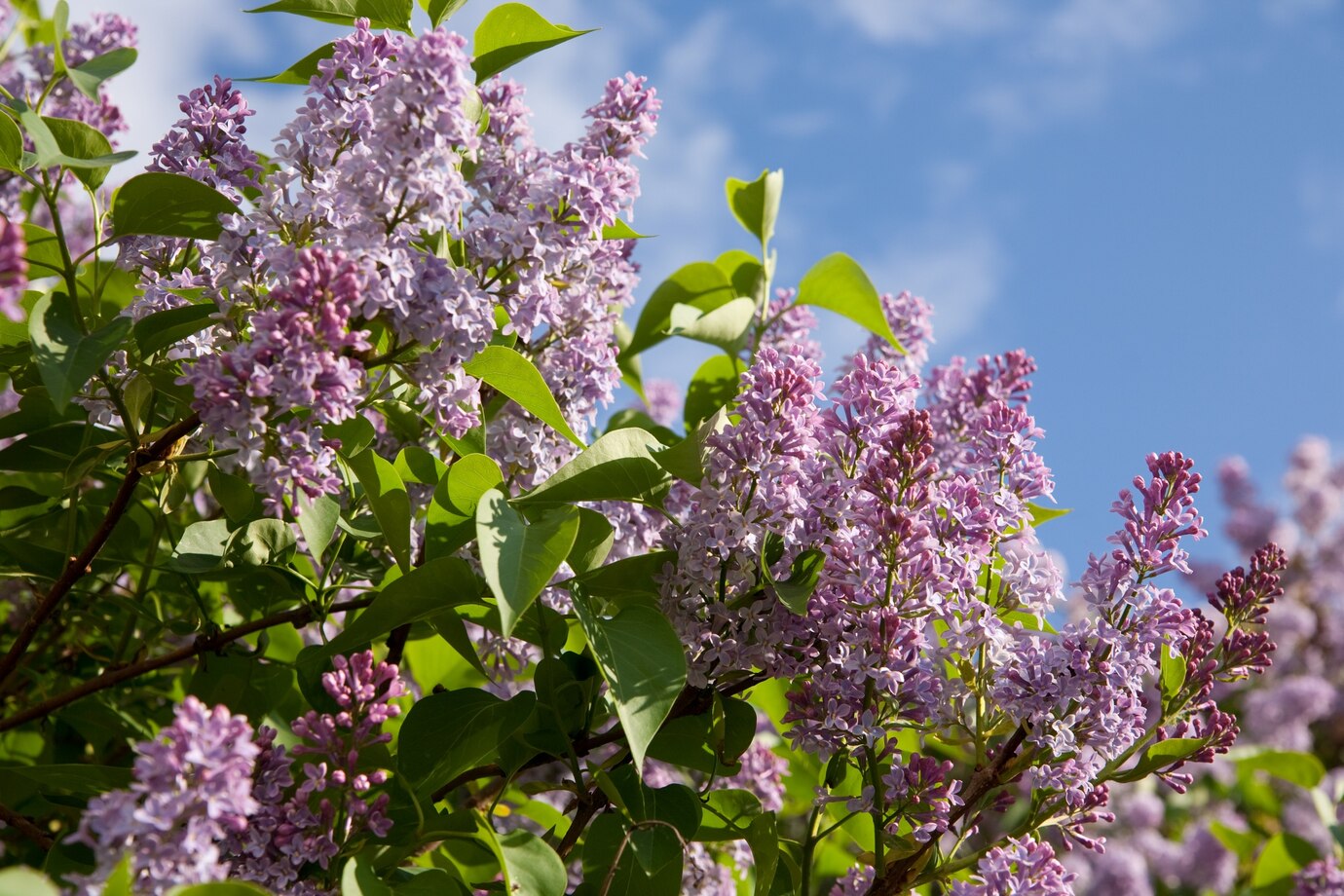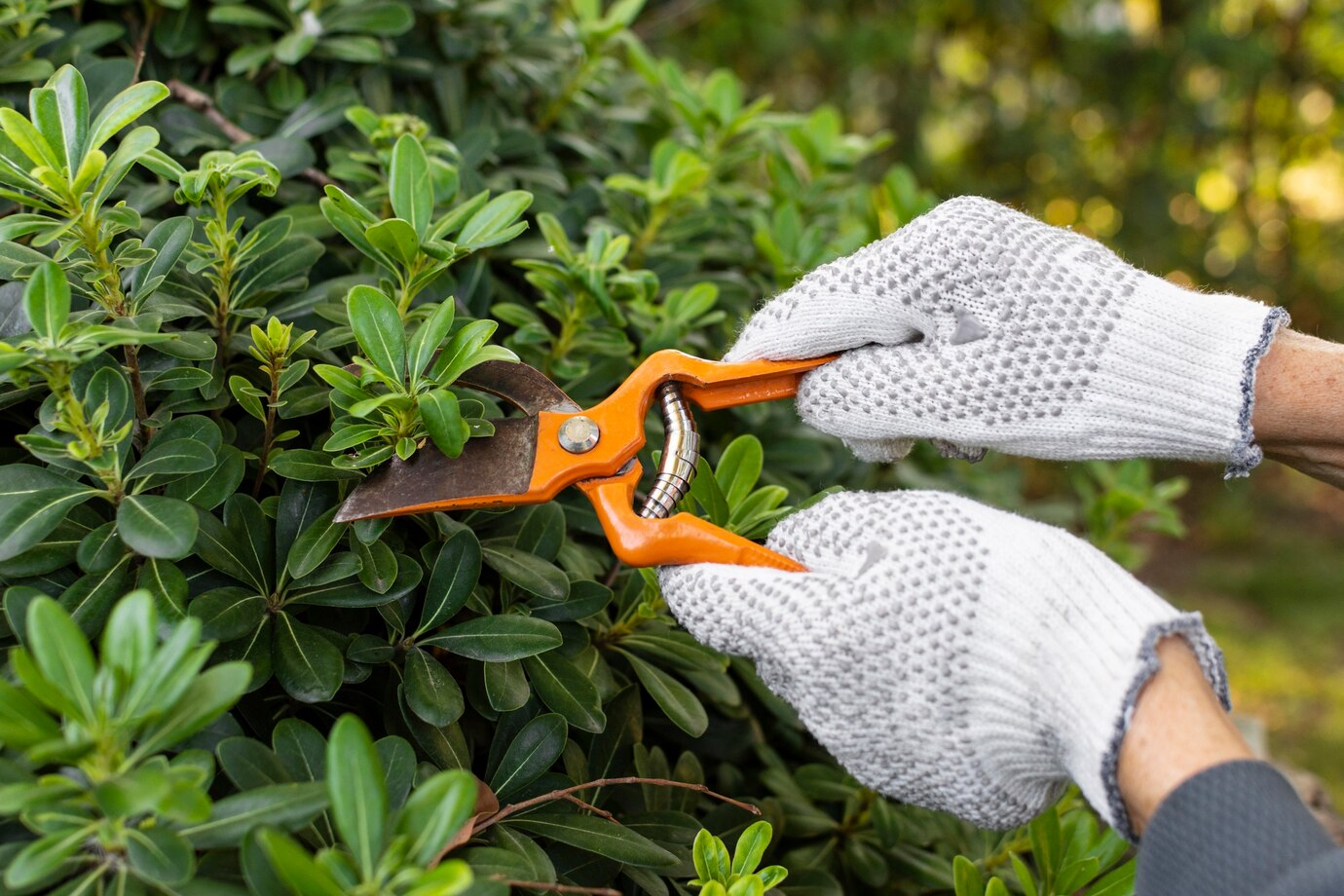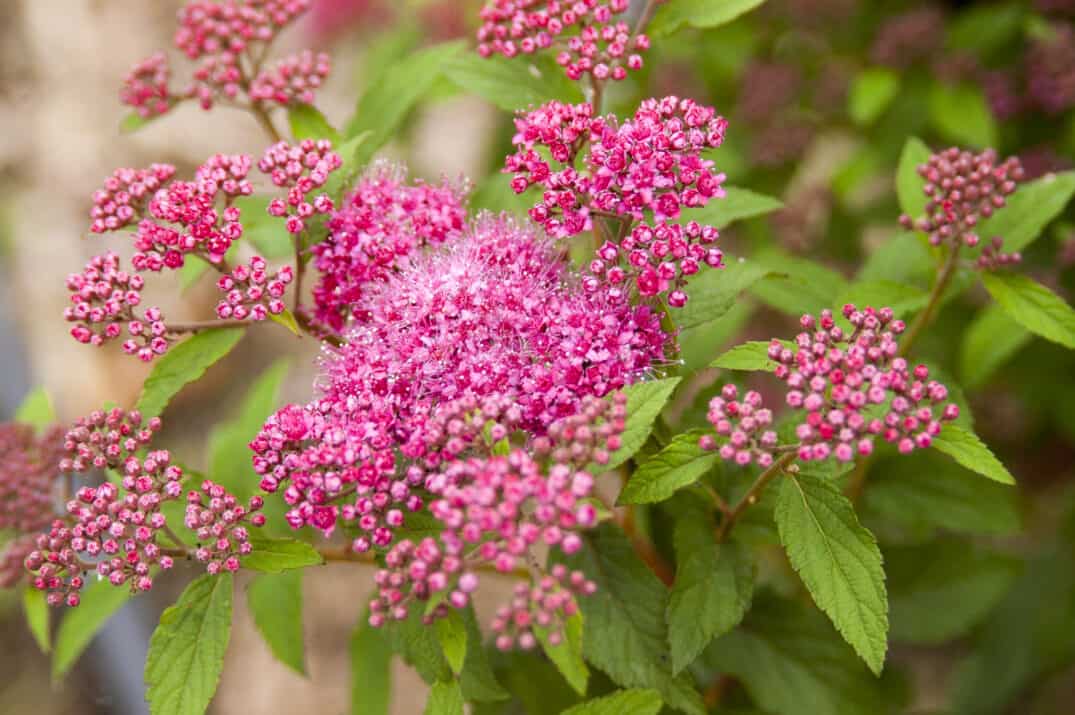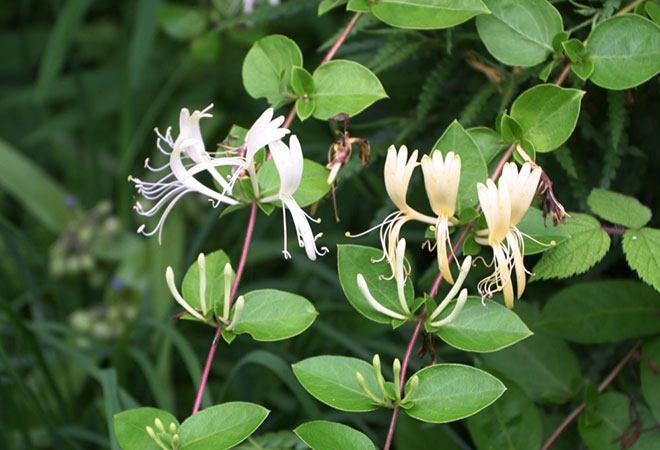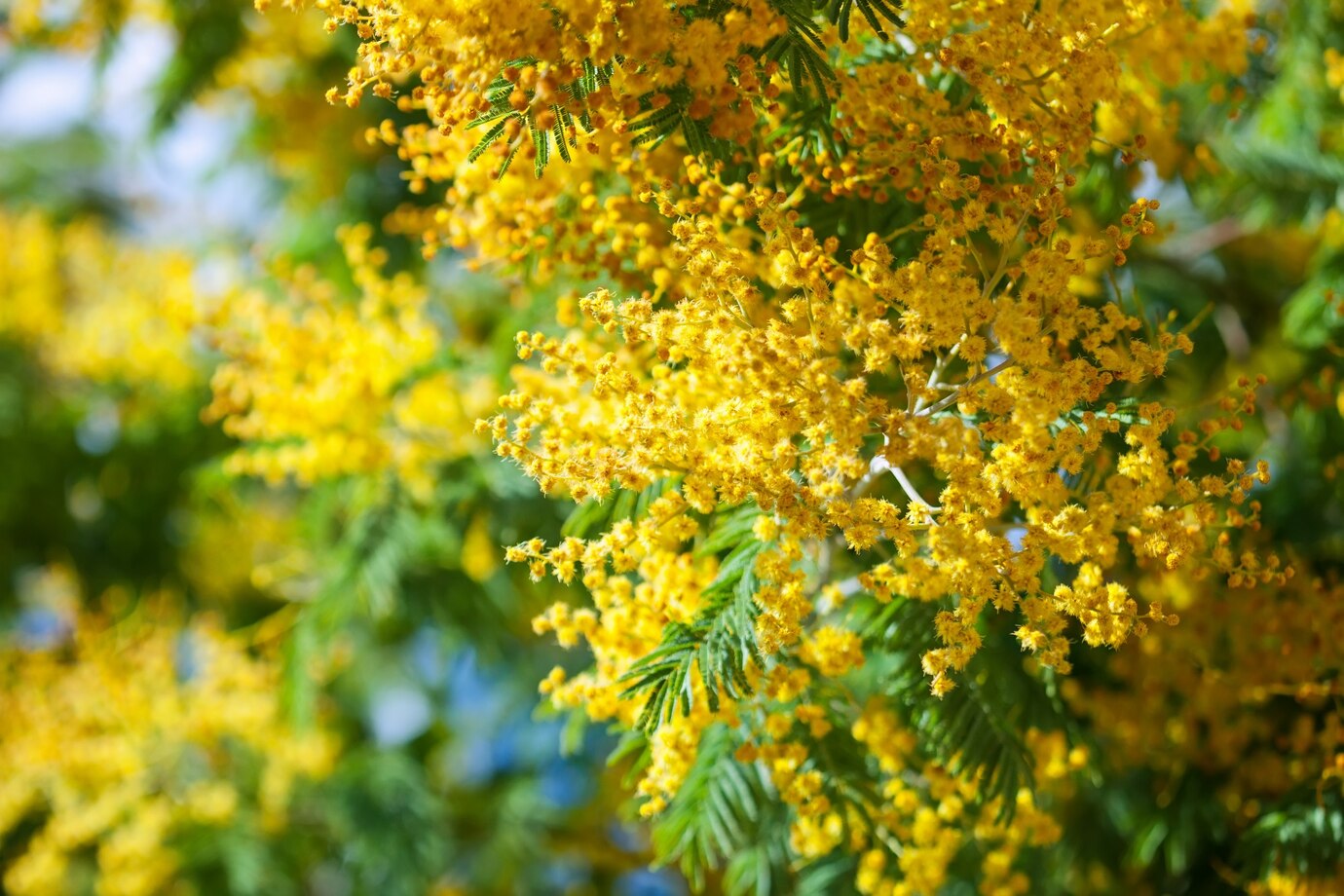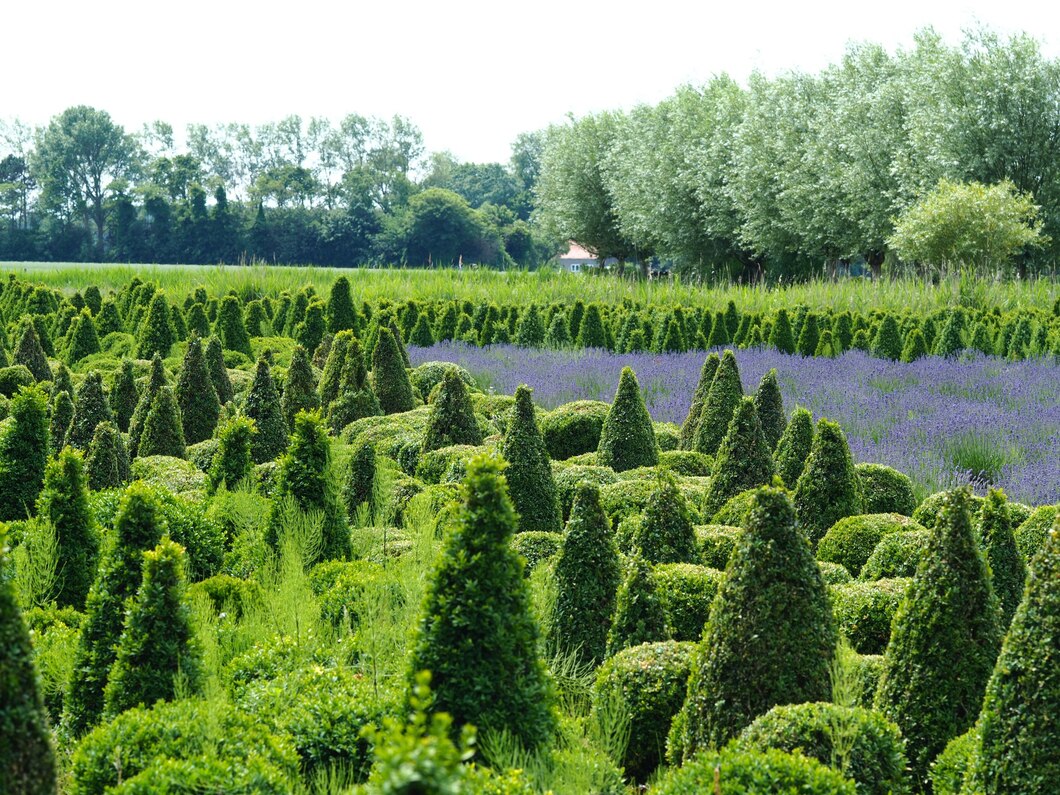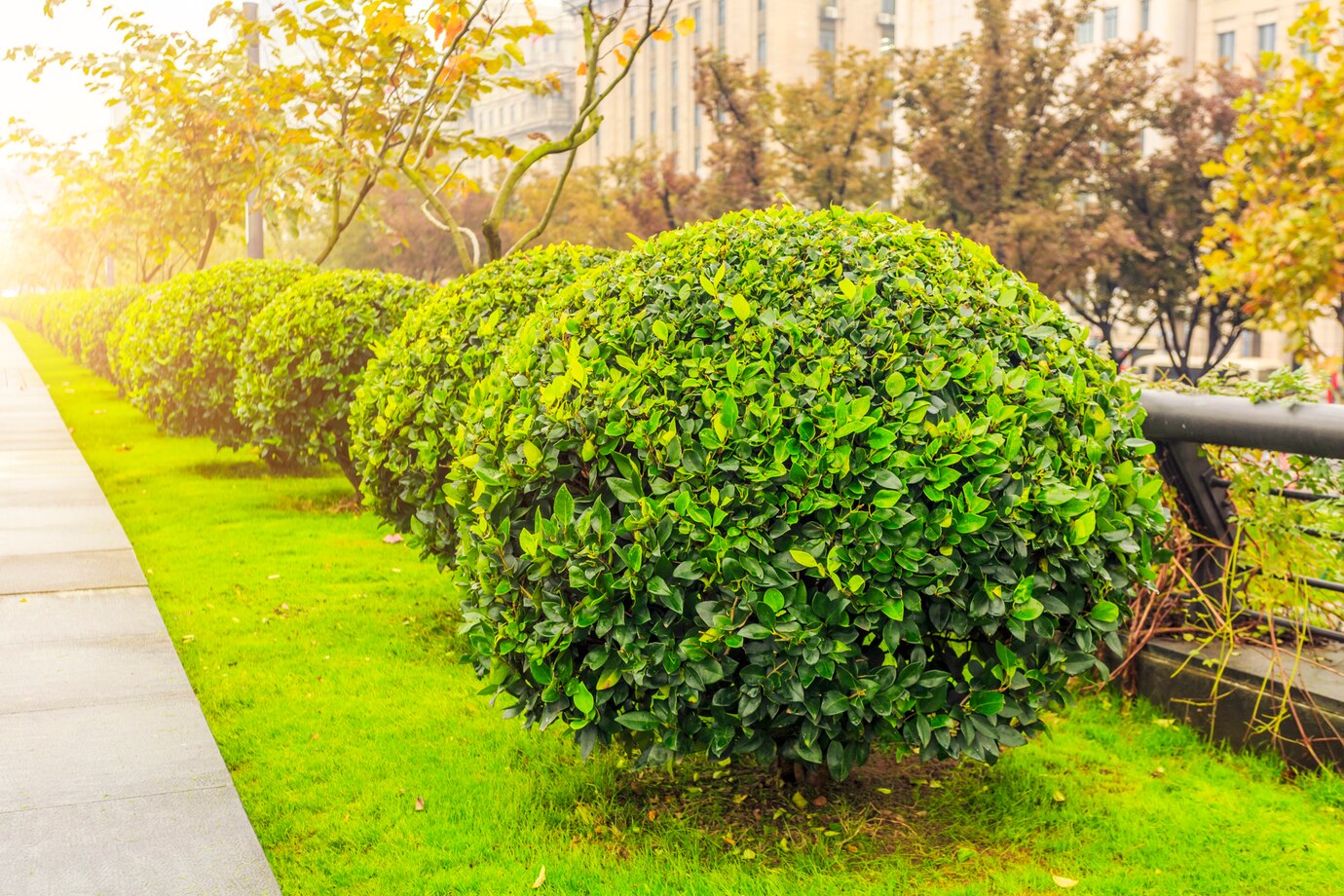Buddleia davidii, often called the butterfly bush, is a tough, summer-blooming shrub that’s incredibly easy to grow. It thrives in a sunny, open spot and benefits from hard pruning in early spring. This fast-growing deciduous shrub produces thick, nectar-rich flower spikes that are especially appealing to pollinators—notably butterflies. To keep the blooms coming through to autumn, regularly deadhead faded flowers.
Table of Contents
ToggleTypes of Buddleias to Grow
Most Buddleias feature pointed grey-green foliage and grow in an upright, arching form. Planting various varieties can keep your garden buzzing with pollinators throughout the season. Unless noted otherwise, the varieties listed below are cultivars of Buddleia davidii:
Black Night – A tall variety reaching up to 3 meters, with rich royal purple blooms and striking orange centers.
Nanho Purple – A more compact option, ideal for smaller garden spaces or growing in large patio containers.
Buzz Sky Blue – Part of the compact Buzz series, this cultivar grows to about 1.2 meters and produces bright blue-mauve flowers in shorter spikes. Other Buzz varieties come in shades of pink or white, also suited for small spaces or pots.
Buddleia globosa – A unique choice with rounded clusters of golden-orange flowers, earning it the nickname ‘Orange Ball Tree.’ This larger shrub can grow up to 5 meters tall.
Buddleia alternifolia – Produces mauve or soft pink blooms along the length of last year’s stems. It thrives when trained against a sunny wall or fence, making it a standout specimen.
With various sizes, colors, and forms, Buddleias are perfect for attracting butterflies and adding vibrant color to your summer garden.
How to Grow Buddleia
When learning how to grow Buddleia, timing is very important. The best time to plant Buddleia is in autumn or spring, once the risk of frost has passed.
If you’re planting during the summer, water it regularly until the plant is well established.
Buddleias are adaptable and will grow in most soil types, provided the soil drains well. Mix horticultural grit into the planting hole for heavy clay soils to enhance drainage. If your soil is already free-draining, add well-rotted manure to help retain moisture and nutrients.
Compact Buddleia varieties can also thrive in large containers. Just make sure to use a good quality, peat-free shrub compost.
Where to Plant and Place Your Buddleia
Planting Buddleia is an excellent choice for a wildlife garden. Choose a sunny area with plenty of space for its arching branches to spread out without crowding nearby plants. Since the wood is somewhat brittle, it’s best to choose a sheltered location to protect the shrub from potential wind damage.
Buddleias are late bloomers, typically flowering in late summer when other shrubs have already finished. Taller varieties, like Buddleia ‘Black Night,’ can be planted as focal points in the garden or positioned at the back of a mixed border. Just be sure you can easily access the plant for early spring pruning. It helps stimulate rapid new growth, where the fresh blooms will appear later in the season.
Caring and Nurturing
To get the best out of your Buddleia, follow these essential tips:
- Plant in a sunny location to ensure optimal growth.
- Use well-drained soil for healthy roots.
- Buddleia davidii is hardy enough to handle cold winters, but tender varieties may need protection. Use horticultural fleece during the winter months, and if your plant is in a container, move it to a greenhouse or conservatory for extra protection.
- Remove spent flowerheads to improve the shrub’s appearance and encourage a second round of slightly smaller blooms.
- Water new Buddleias for about 18 months after planting. To retain moisture, apply a 5cm layer of mulch in early spring.
- No additional feeding is required beyond an annual mulch for plants in reasonably fertile soil. However, container-grown Buddleias benefit from a yearly application of continuous-release or liquid fertilizer from April to October.
- Prune back to 90cm or less in early spring to encourage healthy growth.
- Propagate Buddleia by taking out softwood cuttings in early summer or semi-ripe cuttings later in summer. These cuttings root fairly easily and should be ready to plant in about two years.
- Repot container-grown Buddleias every three years to prevent them from becoming root-bound. Use peat-free multi-purpose compost for the best results.
Common Pests and Diseases
Buddleia can sometimes be affected by the following pests:
Capsid bug: These bugs damage the leaf tips.
Figwort weevil: This pest also distorts the leaf tips.
Earwigs: These insects nibble on the flowers.
How to Get Rid of Capsid Bug
Attract natural predators in your garden to help control the capsid bug population. Alternatively, you can spray the affected parts of the plant with BugClear Ultra, following the instructions on the label.
How to Get Rid of Figwort Weevil
The same approach for controlling capsid bugs can be applied to figwort weevil.
What to Do About Earwigs on Your Buddleia
Create an earwig trap by filling an inverted paper cup with a straw. It provides a daytime shelter for the earwigs, which can be removed. Since earwigs are great at eating aphids, you may want to relocate them to another part of the garden instead of removing them entirely.
Frequently Asked Questions
When should I prune Buddleia?
Prune Buddleia in early spring, cutting it back to less than 90cm to encourage new growth.
When does Buddleia flower?
Most Buddleia varieties bloom throughout the summer, typically from June until autumn.
Is Buddleia poisonous?
No, Buddleia is not poisonous.
Does Buddleia take long to grow?
No, Buddleia is a fast-growing plant. You can cut it back every spring to promote the growth of new stems.

